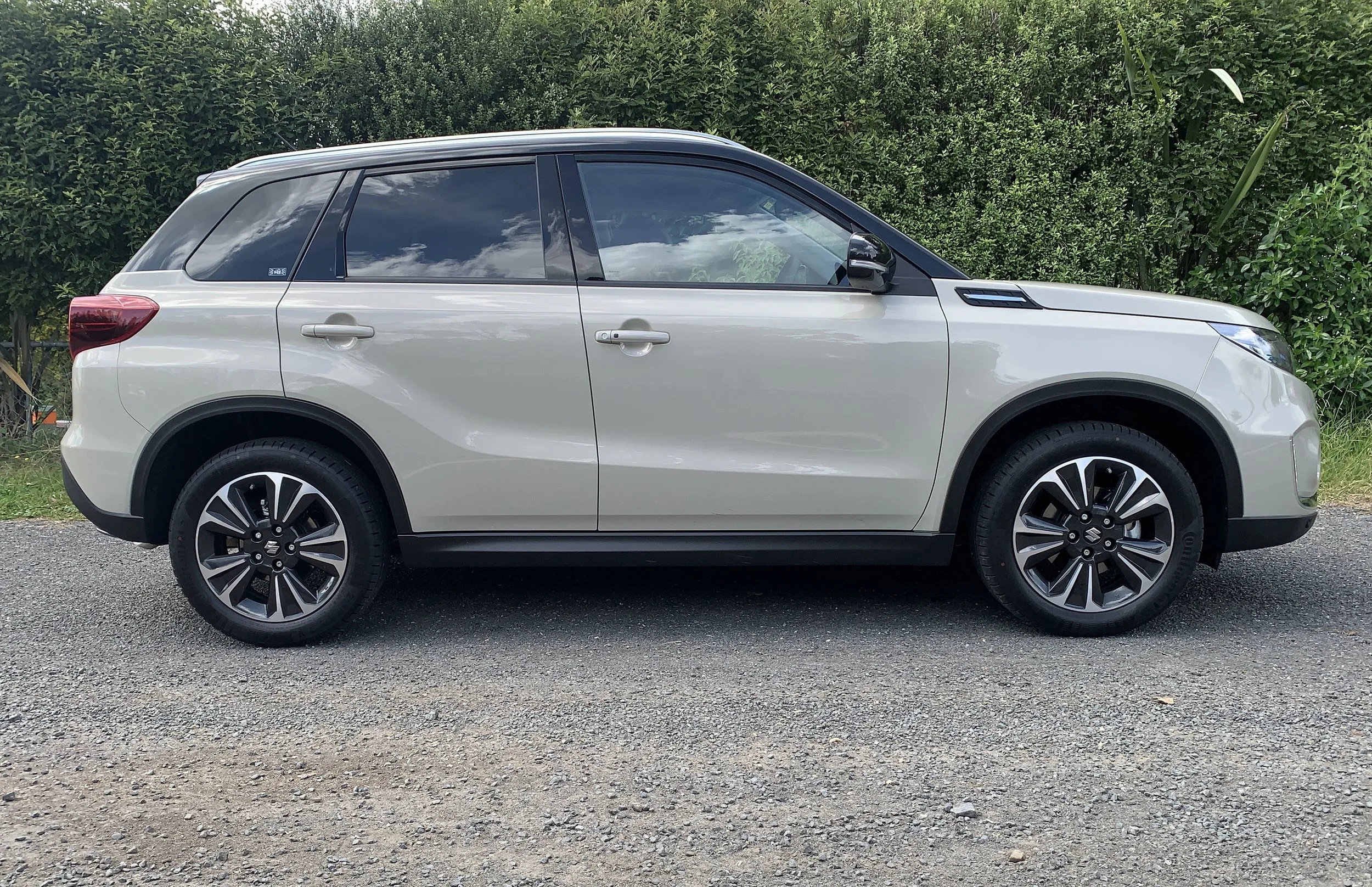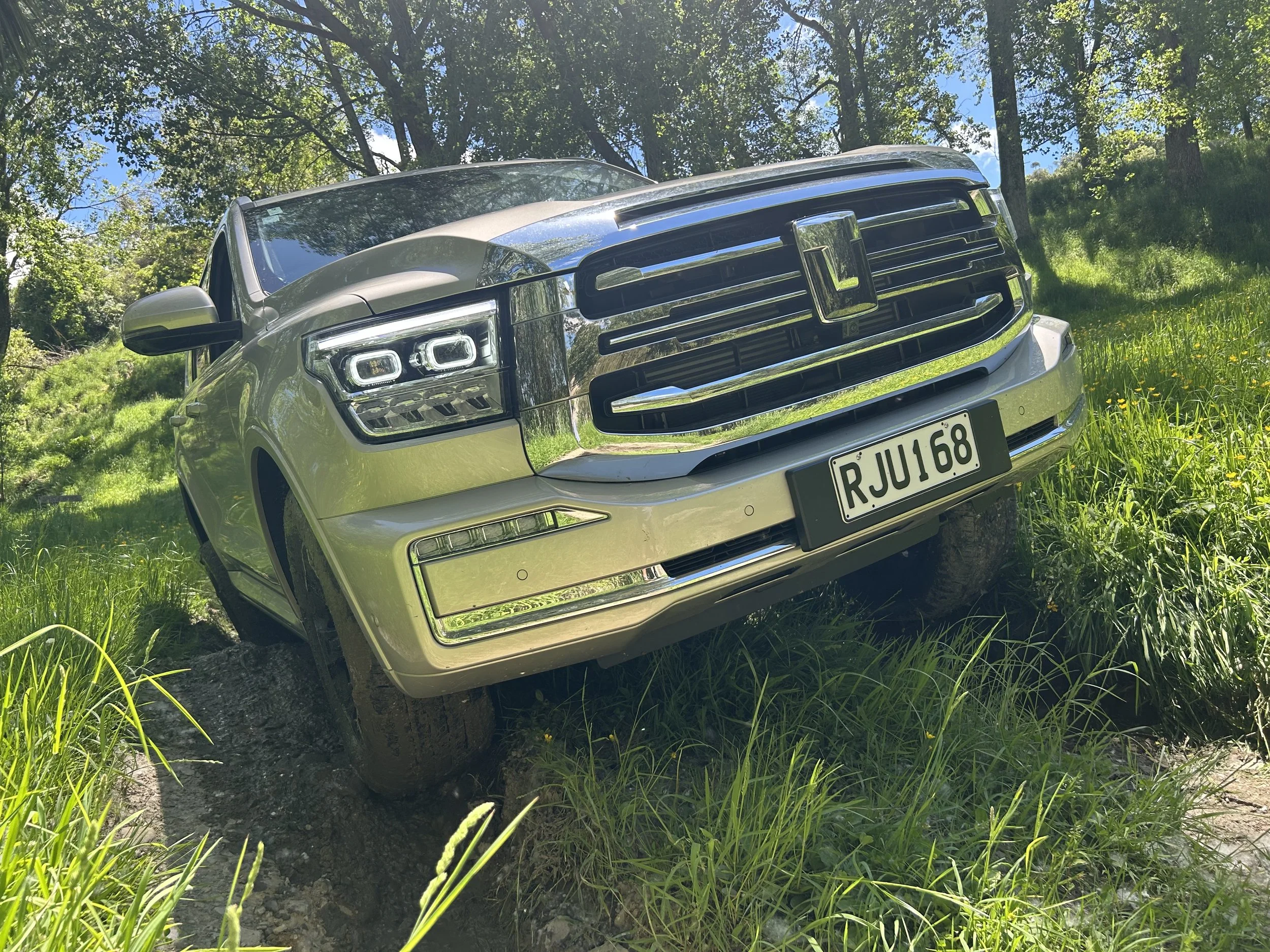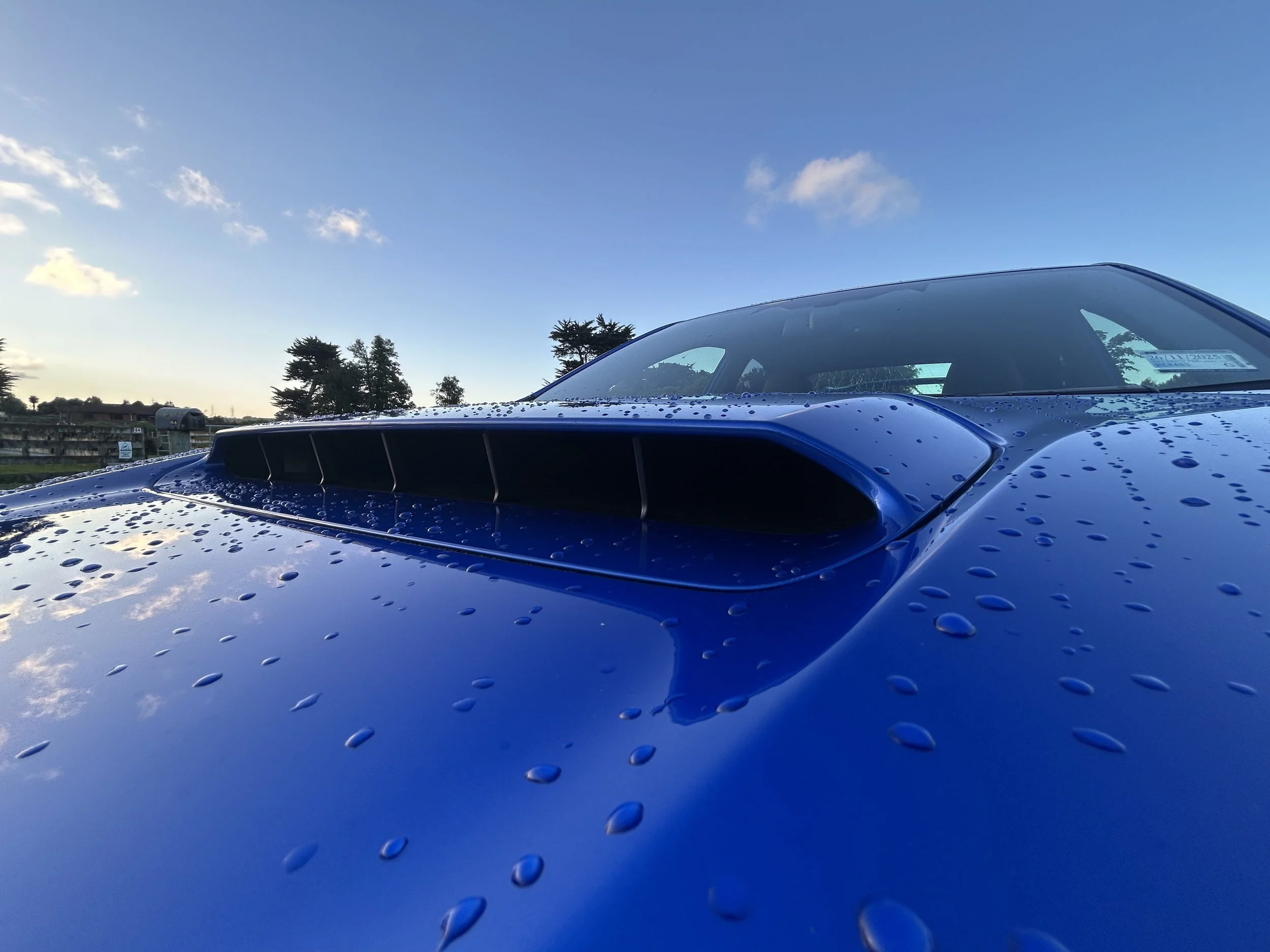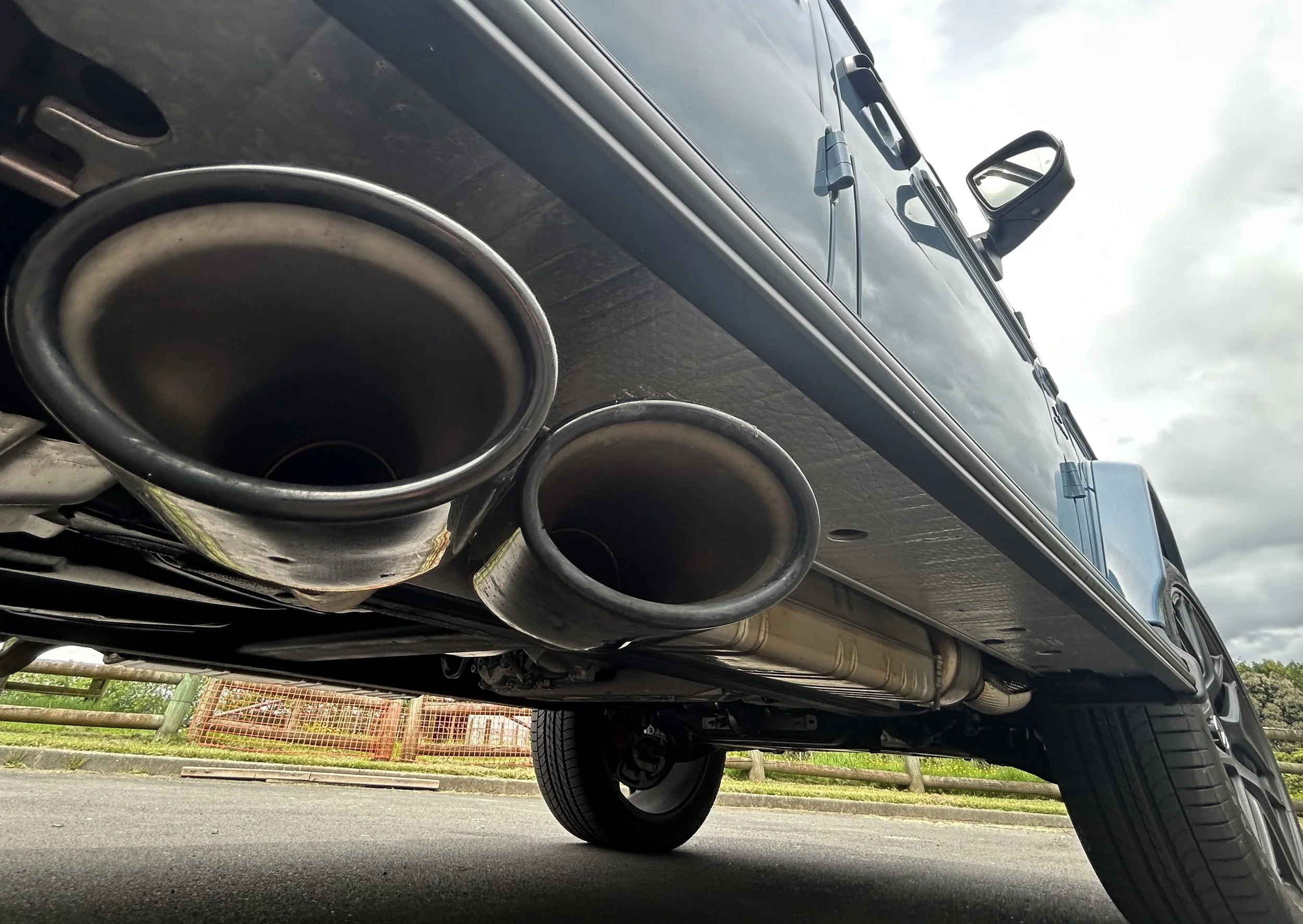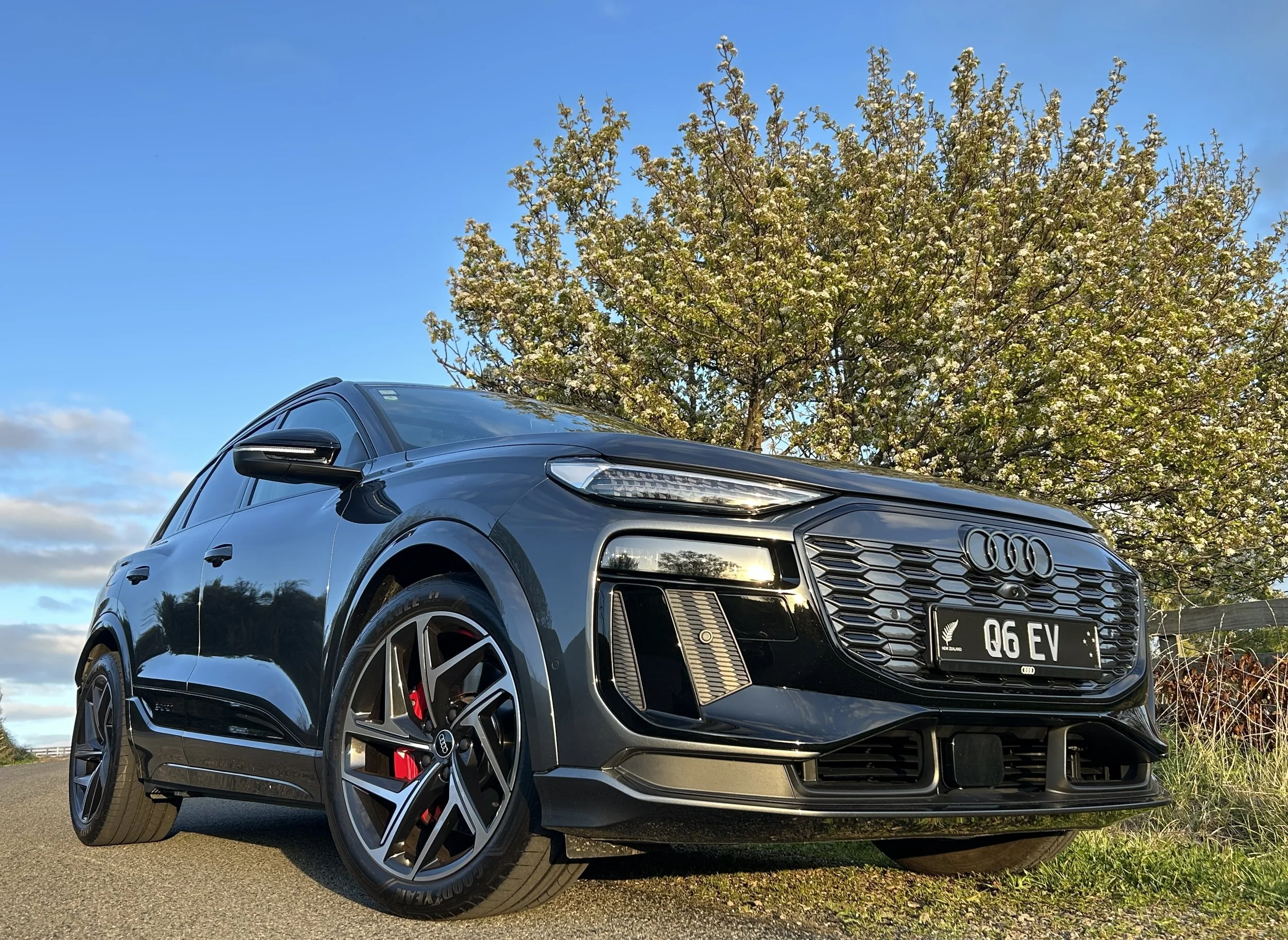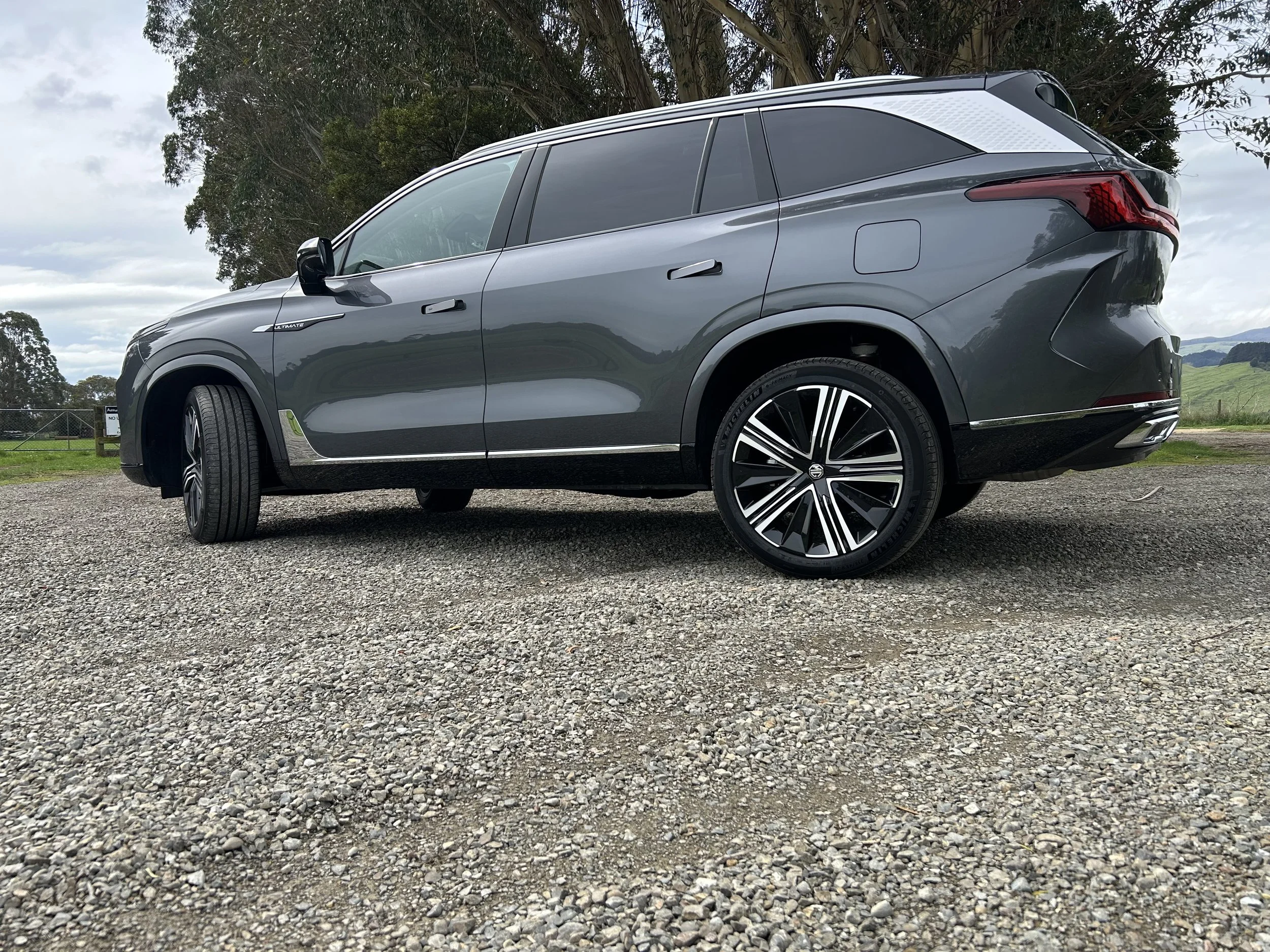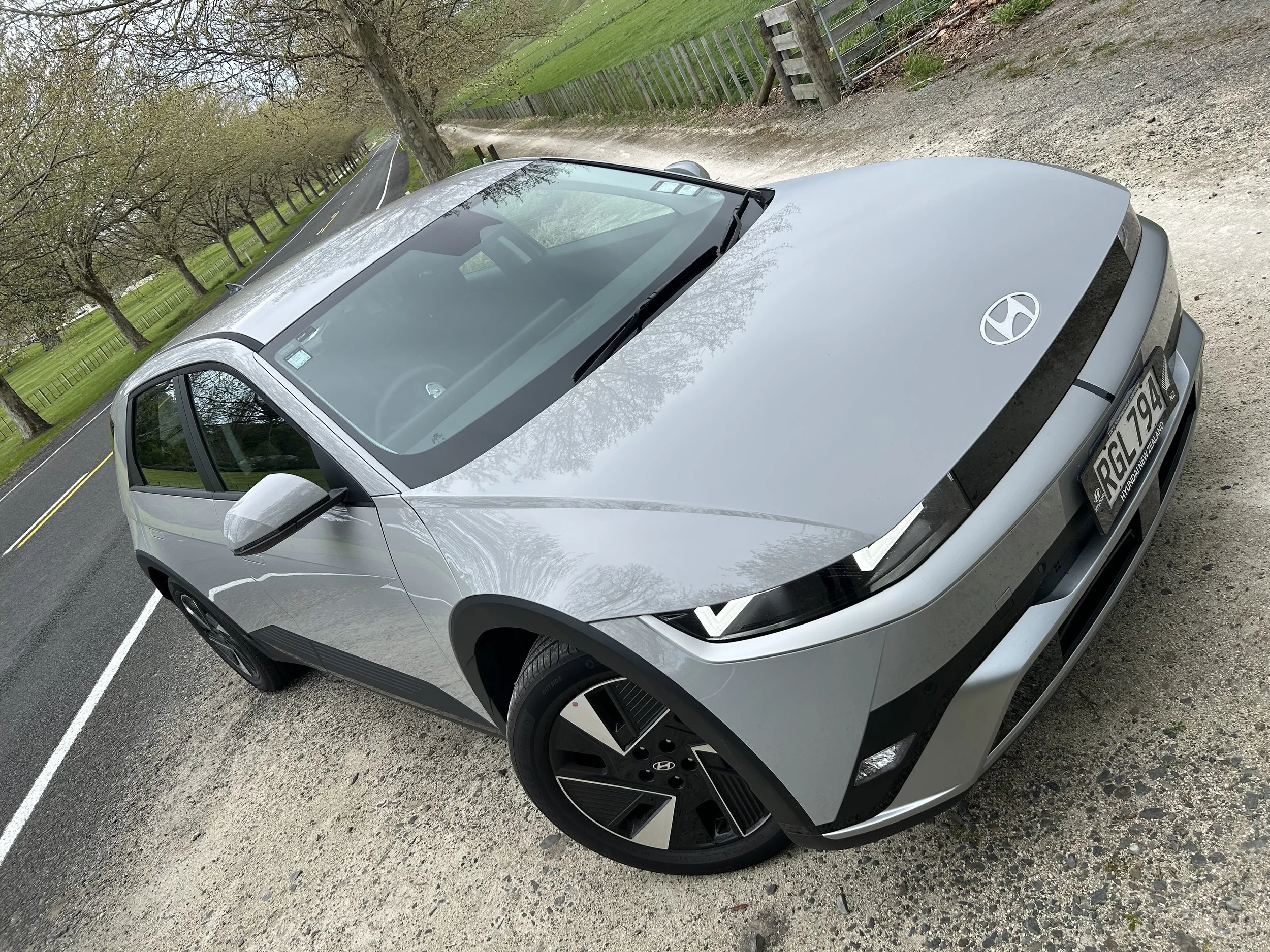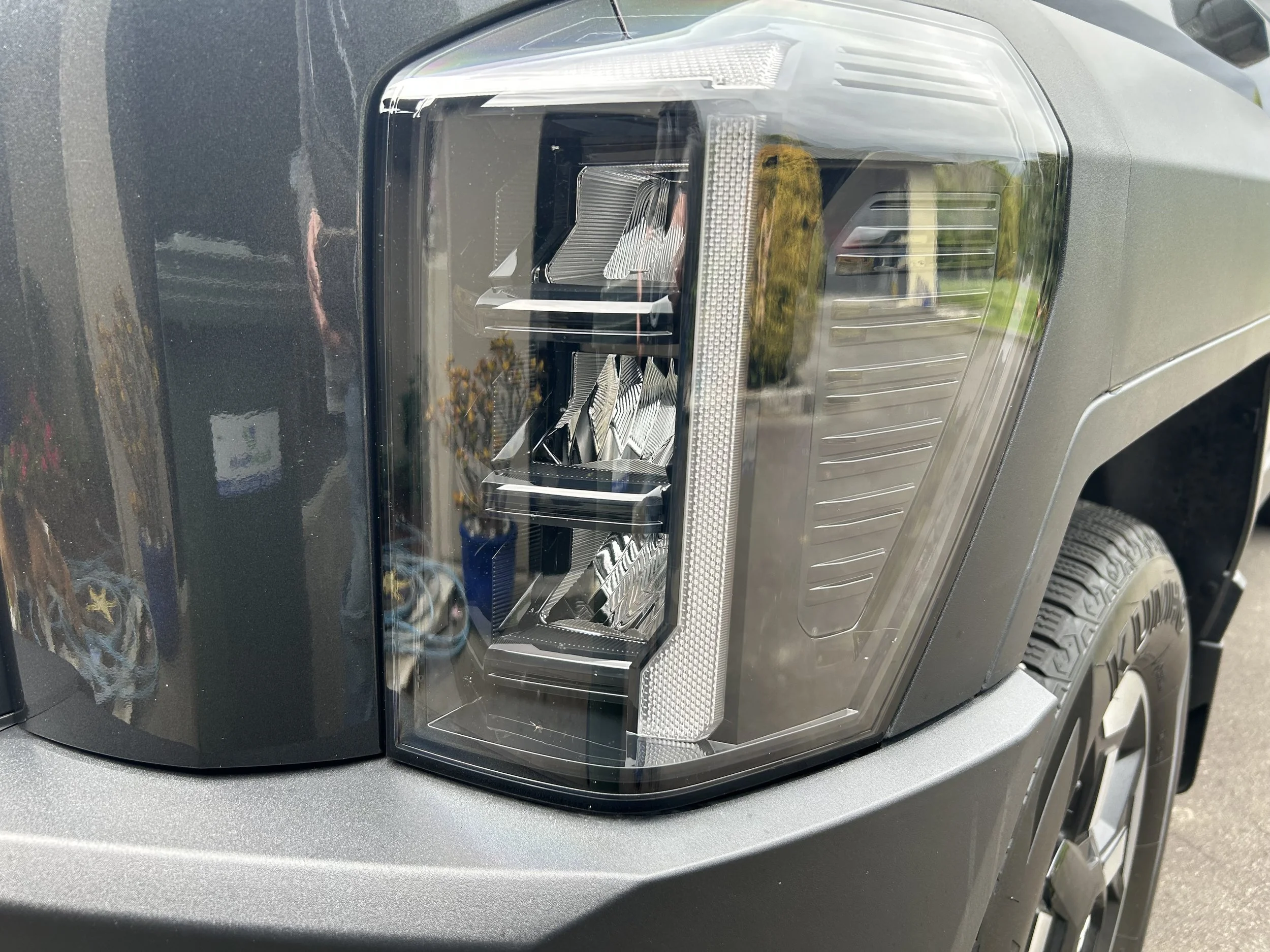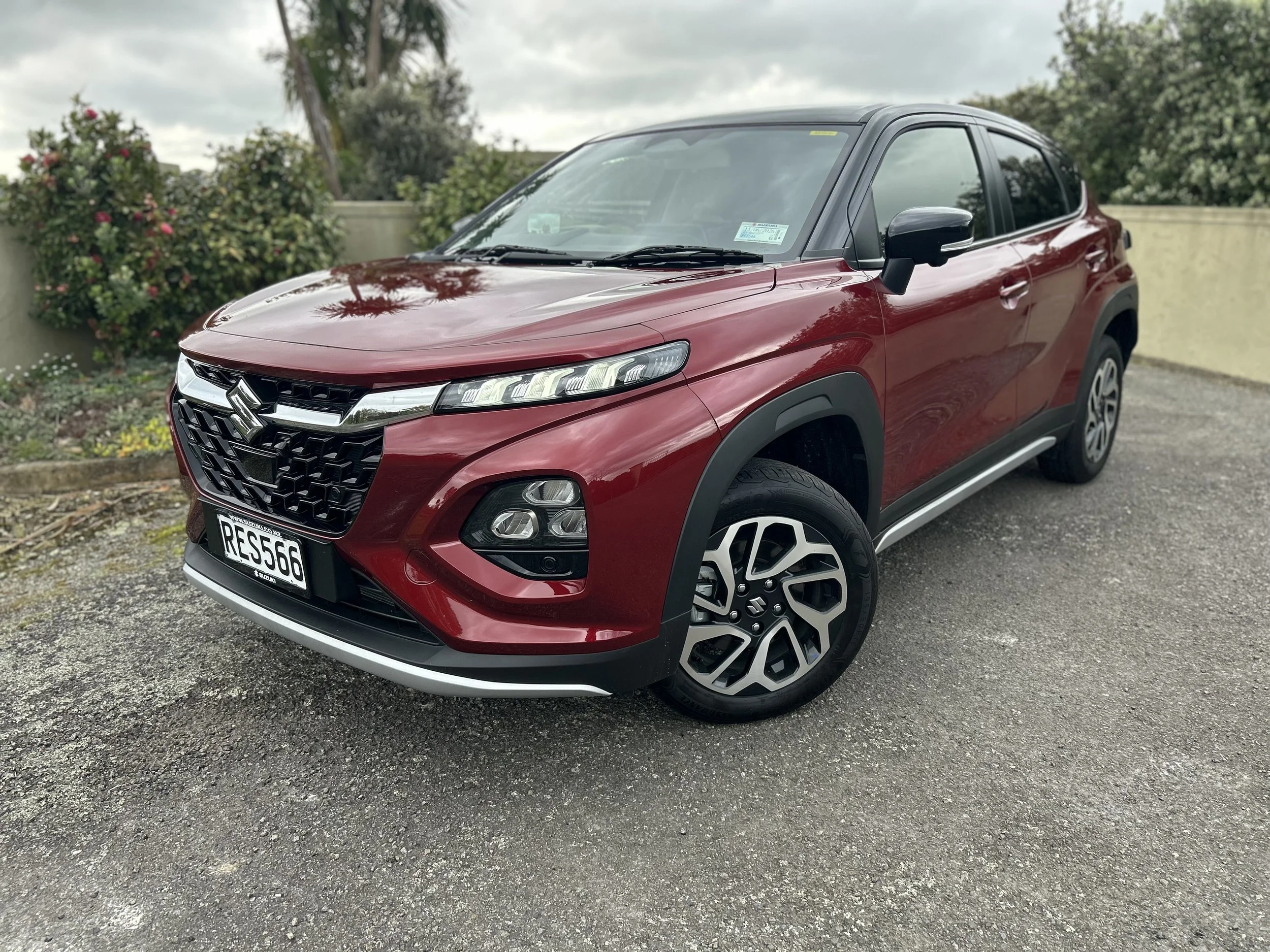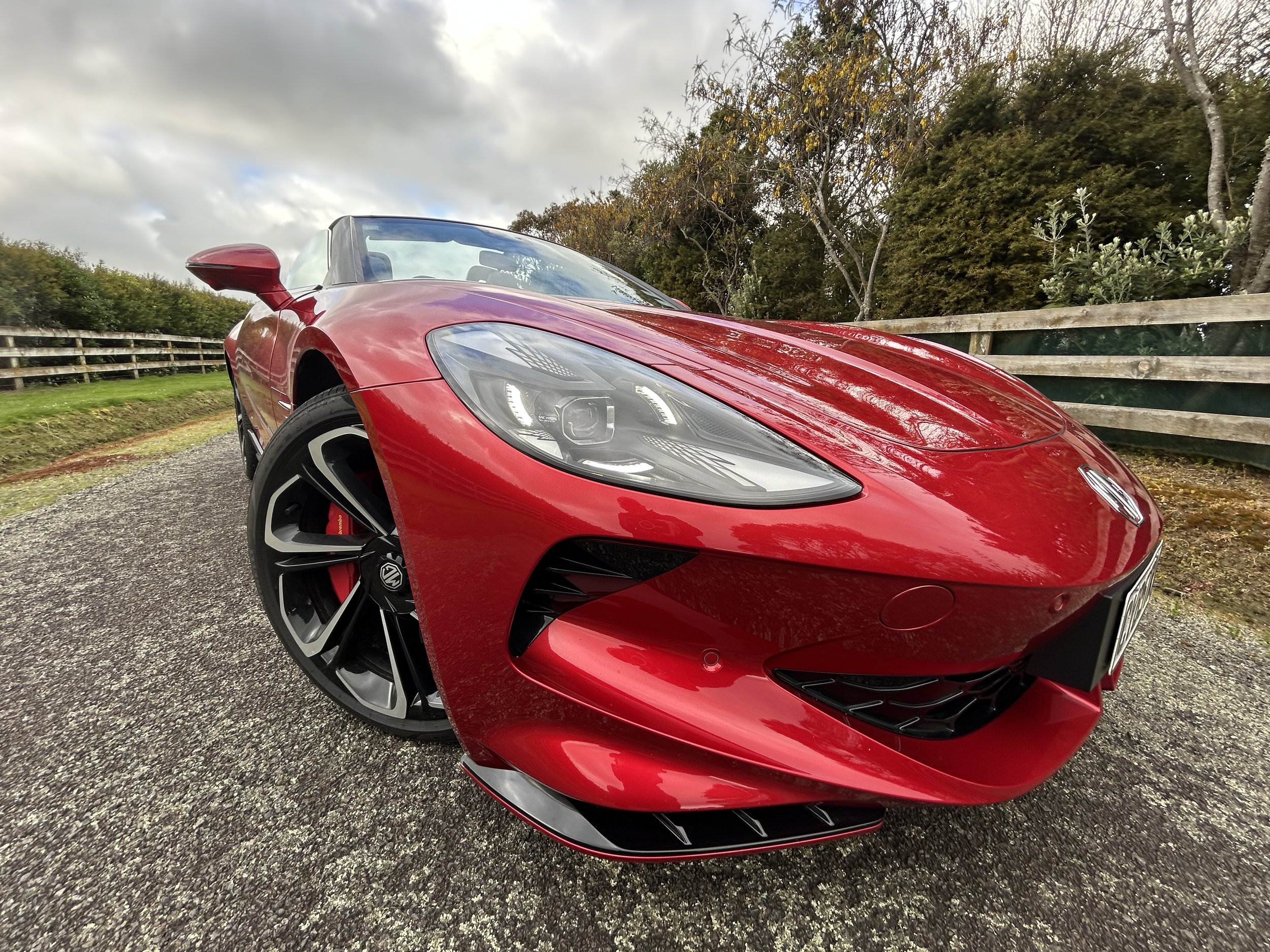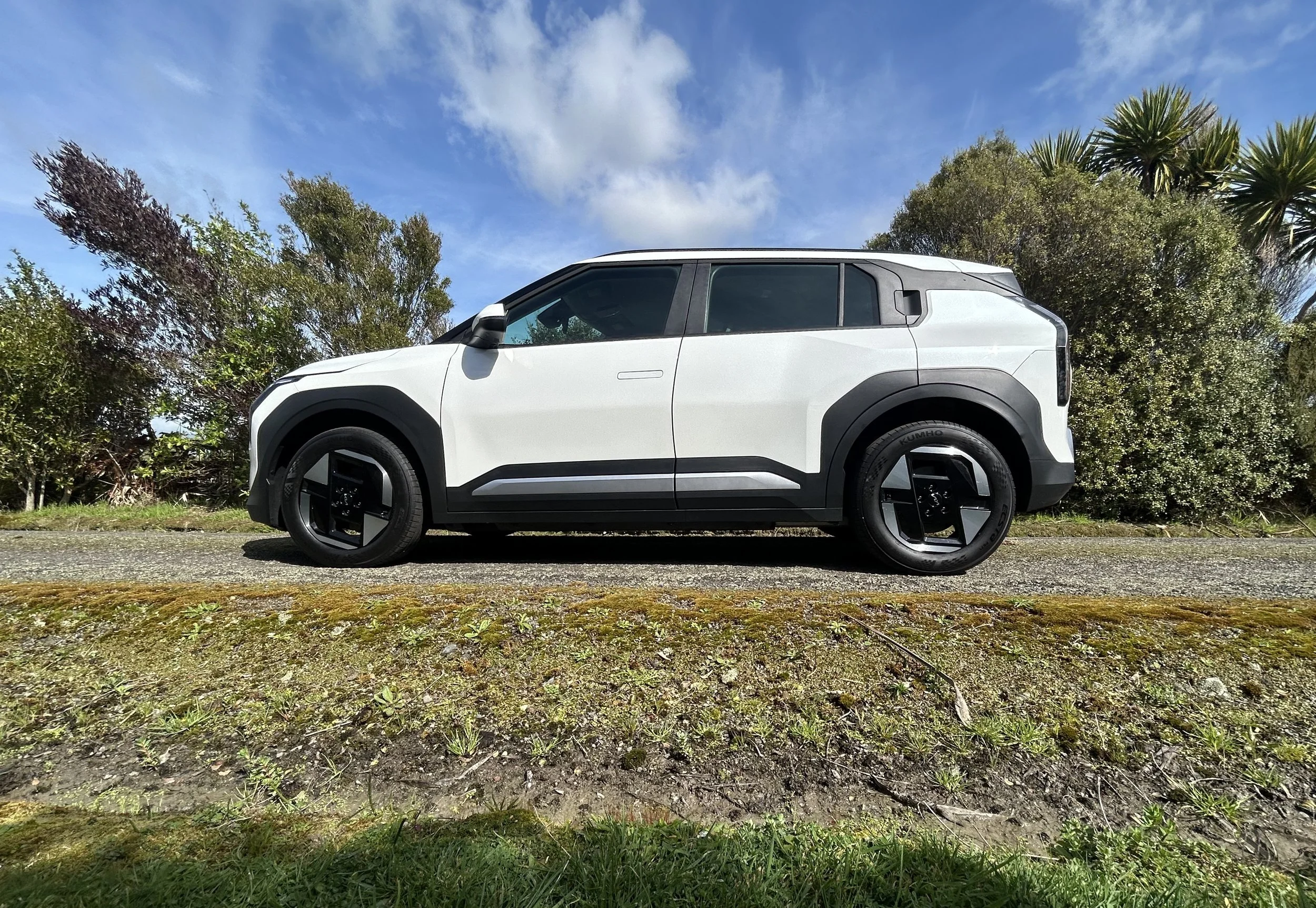Suzuki NZ wires up for electric chapter
/Having the compact battery-pure e-Vitara will help brand keep its fleet average emissions in check, but issues with legislation still remain.
CLEARING the way for the electric version of Suzuki’s first electric car has begun, even though the landmark type won’t be here until next March.
As the name suggests, the e-Vitara (above) is a battery-dedicated new chapter for one of the Japanese make’s oldest model lines, whose internal combustion story began in the 1980s.
When the electric arrives, it’ll be a changing of the guard, with Suzuki New Zealand expressing uncertainty about keeping on the current 1.4-litre petrol hybrid model.
Vitara is no longer the sales giant it once was, and the more internal combustion choices the Wanganui-based operation has, the more challenged it will be to stay on the right side of emissions regulations set to gradually tighten over the next few years.
Adding to the Clean Car Standard that’s already in place is a requirement from year-end for all new cars sold here to meet Euro6d.
New Zealand was initially not expected to apply that standard until 2028, but adoption was moved forward to synch with its introduction to Australia in December.
Government argument that this was logical when many brands now treat the two countries as a common market can hardly be countered by Suzuki. The top management of Japan’s smallest mainstream car brand has decided that’s the way it will operate.
Suzuki NZ is already losing availability of the current petrol Vitara (below).
Though there is enough supply of the front-drive version to last until early 2026, the all-wheel-drive types that were once a major seller have already sold out.
Although a facelift of the current ICE car - with intent to give it closer visual identity to e-Vitara - seems to be probable, local adoption seems unlikely, Suzuki NZ’s chief executive expressed today.
At media launch for the Fronx, a 1.5-litre crossover replacing the Baleno that ceased availability in 2022, Gary Collins explained why.
Even though his make is now heavily dedicated to mild hybrids - with the Ignis small car standing as the sole exception - and regardless that having an EV will be beneficial to lowering its fleet average CO2 next year, it’s not in clear air.
So that and consumer trends makes it more sensible for his operation to cease with Vitara and push customers toward the S-Cross crossover, which does much the same job.
Collins is not yet able to say how many derivatives of e-Vitara might come here.
The car comes with a choice of two battery packs - 49kWh and 61kWh - with the larger pack being available with optional ‘AllGrip-e’ four-wheel drive reliant on electric motors.
The entry-level model gets the 49kWh battery along with a single 106kW electric motor driving the front wheels.
The 61kWh avails with front-wheel drive, featuring a 128kW motor, while the four-wheel drive has a combined power of 135kW.
Suzuki expects to squeeze 400km out of the 49kWh battery. Conceivably, then, the 61kWh version should be able to manage something like 480km on one charge.
E-Vitara will be the third Suzuki model, following Jimny five-door and Fronx, that Suzuki NZ takes from India which, with four plants capable of producing 2.6 million vehicles per annum, has become a more important manufacturing base than Japan.
Planning for e-Vitara will be defined by the electric car market having been through a huge slump since the cessation of rebates and the technology being targeted by Road User Charges.
But it’s vital in a future in which brands have to reduce their fleet averages.
As much as Collins is relieved Clean Car legislation requiring car distributors to lower their exhaust nasties has become less stringent under the National-led coalition than when the rules were drawn up by Labour, he still has issues.
While the public-fronting Clean Car Discount has gone, the industry-facing standard is still very much alive.
CCS charges importers for bringing in vehicles with higher emissions and rewarding them with credits for importing vehicles with lower emissions - the ace card models being electrics.
While CCS was diluted a bit last year, penalties are still in place and will lift considerably in 2028.
In addition, one ongoing grievance from Suzuki NZ is that a system of weight limits that don’t favour small-engined light cars - the make’s obvious speciality - as much Collins believes they should.
He argues that it’s good to have low to no emissions cars, but says realities also need to be considered.
“It's important that our market continues to have access to affordable new vehicles as a public holding onto their old and uneconomical cars because they cannot afford a new vehicle, does nothing to improve real world emission levels.”
Last year’s CCS review, Collins says, “brought alterations … that are providing some level of relief.
“The original targets that were set (were) moving us to one of the toughest target levels in the world. With the review, the targets for 2026 and 2027 were brought back to far more achievable levels.
“This places us in a position where we have some mild hybrid models achieving target levels, whereas we had expected all these models to be incurring penalties.”
The Ignis small hatch is used as a case in point by Collins.
The lightest, cheapest and ultra-frugal model in Suzuki’s portfolio will incur a $1404 penalty from end of the year. If rules had altered to what Suzuki believes was a fairer scale, that would be down to $432.
This will be a short-term consideration, as Ignis will be retired this time year. It’s already disappeared from Australia, because as of March 1 all new cars need automated emergency braking, a feature the baby hatch lacks. That’s not an issue here, and Suzuki NZ has snapped up available stock, but it’s production life is ending and no replacement seems likely.
In the meantime, Collins is out to make hay. “It’s a very significant seller for us. We've been able to carry on beyond what Australia can … it’s probably going to be more likely going to the mid 2026 period from what our planning is at the moment.”
But, still, what miffs Collins is that “the double cab (diesel) utes that are causing the most emissions gained the largest concessions in the last review, whereas the affordable small cars that are already achieving low emissions are the ones being penalised.
“So this topic remains an aspect of CCS we believe needs to be reviewed.”
The e-Vitara is the end result of an EV project that has lasted years and has very little in common with the internal combustion Vitara apart from the name.
It is based on a new flexible architecture called Heartect-e, which has been designed especially for electric models and will also be shared with Toyota, whose own version - Urban Cruiser - seems probable for NZ.
Suzuki favours a lithium-iron phosphate battery chemistry on grounds it makes for a more robust battery pack.
The e-Vitara draws its styling from an eVX concept car shown in 2023.
Suzuki is the last of Japan’s car makers to go electric and as much as e-Vitara is unlikely to stand alone, like Toyota and Mazda Suzuki also favours a multi-path approach using methods suitable for each region in the world such as pure electrics. hybrids, compressed natural gas and biofuel vehicles.
“The multi pathway approach to reducing emissions with very different regions regulations of various markets Suzuki competes in seems to be very sensible, given the rapid changes in government policies internationally,” Collins says.



